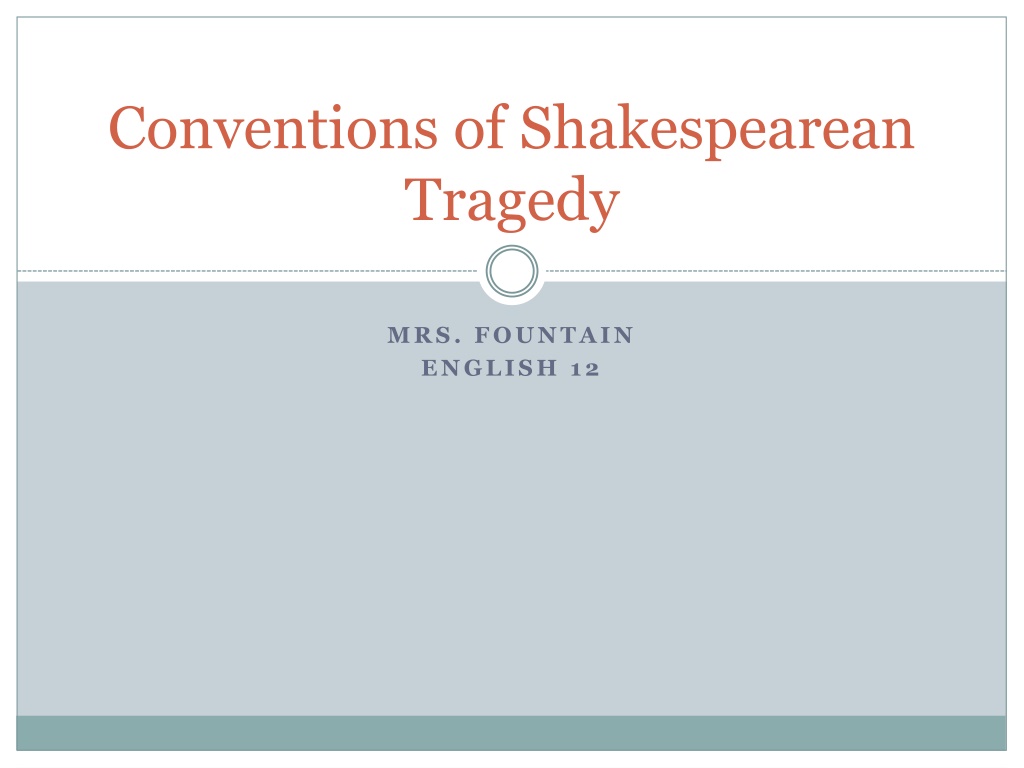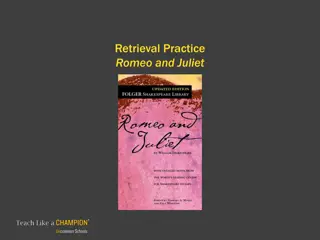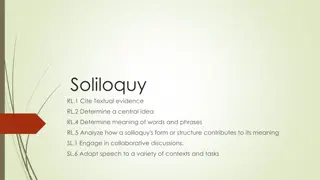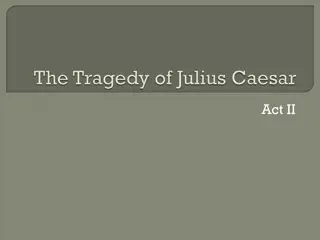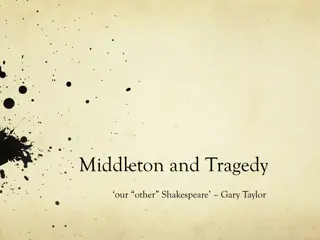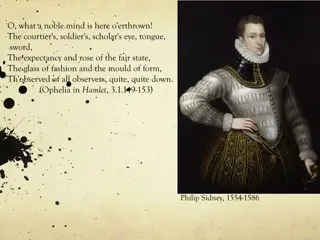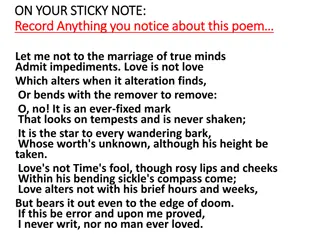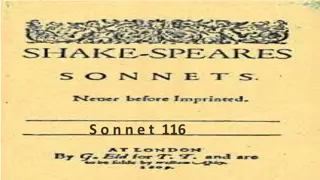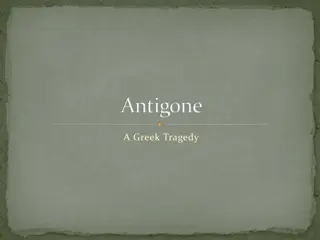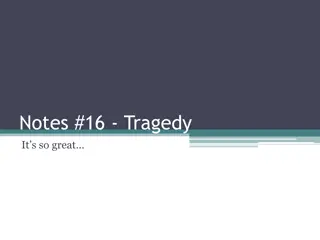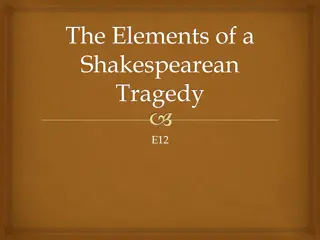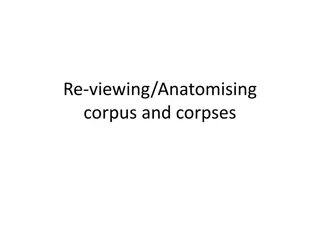Exploring Shakespearean Tragedy: Conventions and Characteristics
Delve into the world of Shakespearean tragedy through the examination of key conventions such as the tragic hero, plot development, and themes. Understand the aspects of tragedy and drama, including blank verse, soliloquy, aside, dramatic irony, and foreshadowing. Discover how these elements come together to portray the timeless themes of fate, loss, death, and more in Shakespeare's iconic works.
Download Presentation

Please find below an Image/Link to download the presentation.
The content on the website is provided AS IS for your information and personal use only. It may not be sold, licensed, or shared on other websites without obtaining consent from the author. Download presentation by click this link. If you encounter any issues during the download, it is possible that the publisher has removed the file from their server.
E N D
Presentation Transcript
Conventions of Shakespearean Tragedy MRS. FOUNTAIN ENGLISH 12
Characteristics of Tragedy The intention of tragedy is to exemplify the idea that human beings are doomed to suffer, fail, or die because of their own flaws, destiny, or fate.
The Tragic Hero The main character who comes to an unhappy or miserable end Is generally a person of importance in society, such as a king or a queen Exhibits extraordinary abilities but also a tragic flaw, a fatal error in judgment or weakness of character, that leads directly to his or her downfall
The Plot Involves a conflict between the hero and a person or force, called the antagonist, which the hero must battle. Inevitably the conflict contributes to the hero s downfall. Is built upon a series of casually related events that lead to the catastrophe, or tragic resolution. This final stage of the plot usually involves the death of the hero. Is resolved when the tragic hero meets his or her doom with courage and dignity, reaffirming the grandeur of the human spirit.
The Theme Is the central idea conveyed by the work and usually focuses on an aspect of fate, loss, defeat, death, loyalty, impulse, or desire Shakespearean tragedies may contain several themes
Conventions of Drama Blank Verse Soliloquy and Aside Dramatic Irony Foreshadowing
Blank Verse Like many plays written before the 20thcentury, Macbeth is verse drama, a play in which the dialogue consists almost entirely of poetry within a fixed pattern of rhythm, or meter. Many English verse dramas are written in blank verse, or unrhymed iambic pentameter, a meter in which the normal line contains 5 stressed syllables, each preceded by an unstressed syllable. Example: So foul and fair a day I have not seen.
Soliloquy and Aside A soliloquy is a speech that a character makes while alone on stage to reveal his or her thoughts to the audience. An aside is a remark that a character makes in an undertone to the audience or another character but that others on stage are not supposed to hear.
Dramatic Irony Irony is based on a contrast between appearance or expectation and reality. In dramatic irony, what appears true to one or more characters in a play is seen to be false by the audience, which has a more complete picture of the action.
Foreshadowing Foreshadowing is a writer s use of hints or clues to suggest what events will occur later in a work.
